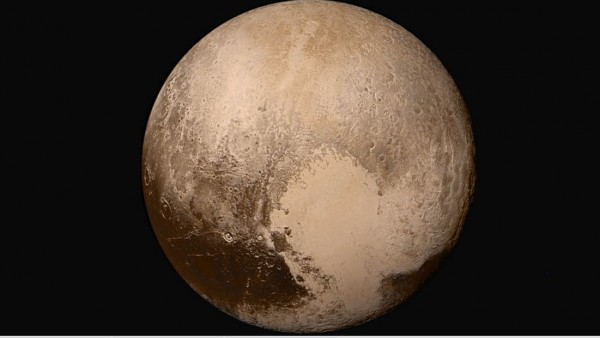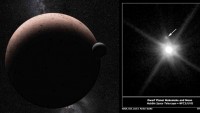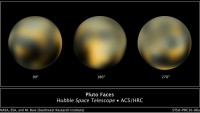New Evidence Points to Pluto Being a Planet … Sort of
| Arthur Dominic Villasanta | | May 08, 2016 08:34 PM EDT |
(Photo : NASA) New Horizons' image of Pluto
The identity crisis bedeviling Pluto continues unabated 10 years after the International Astronomical Union downgraded it to a dwarf planet. The question remains: Is Pluto a planet?
New evidence gathered by the New Horizons mission seems to suggest the answer might be, Yes, it is. Well, sort of.
Like Us on Facebook
At the core of this new confusion is data from New Horizons showing Pluto's interaction with the solar wind is like nothing astronomers have seen ever before in our solar system. This would only be possible if Pluto were a planet in the generally accepted term of the IAU word.
"The results are astonishing. We were fascinated and surprised," said David McComas, who manages the Solar Wind Around Pluto (SWAP) instrument aboard New Horizons and lead author of a study published in the Journal of Geophysical Research.
"We've now visited all nine of the classical planets and examined all their solar wind interactions, and we've never seen anything like this."
What this means is Pluto isn't a comet or a planet. It might also not be a dwarf planet.
Solar wind, a plasma ejected over 100 million miles per hour from the upper atmosphere of the sun, interacts differently with planets, comets and dwarf planets, according to astronomers. This powerful stream of charged particles is diverted when it hits a planet like Earth or Mars.
A comet will gently slow down the solar wind. But in Pluto's case, the result based on New Horizons data, is an "intermediate interaction." What this tells scientists is Pluto isn't a planet nor is it a comet, as was once thought. Pluto is a "hybrid."
"This is an intermediate interaction, a completely new type. It's not comet-like, and it's not planet-like. It's in-between," said Dr. David McComas, who manages the Solar Wind Around Pluto (SWAP) instrument aboard New Horizons.
McComas said SWAP measures the interaction between the solar wind and ions created by atmospheric loss from Pluto. These measurements provide a characterization of the total loss rate and allow scientists to examine the complex plasma interactions at Pluto for the first time
SWAP also discovered Pluto retained its heavy methane ions in its atmosphere, a finding that would not have been possible if Pluto were a comet.
TagsPluto, planet, dwarf planet, International Astronomical Union, New Horizons, David McComas
©2015 Chinatopix All rights reserved. Do not reproduce without permission
EDITOR'S PICKS
-

Did the Trump administration just announce plans for a trade war with ‘hostile’ China and Russia?
-

US Senate passes Taiwan travel bill slammed by China
-

As Yan Sihong’s family grieves, here are other Chinese students who went missing abroad. Some have never been found
-

Beijing blasts Western critics who ‘smear China’ with the term sharp power
-

China Envoy Seeks to Defuse Tensions With U.S. as a Trade War Brews
-

Singapore's Deputy PM Provides Bitcoin Vote of Confidence Amid China's Blanket Bans
-

China warns investors over risks in overseas virtual currency trading
-

Chinese government most trustworthy: survey
-

Kashima Antlers On Course For Back-To-Back Titles
MOST POPULAR
LATEST NEWS
Zhou Yongkang: China's Former Security Chief Sentenced to Life in Prison

China's former Chief of the Ministry of Public Security, Zhou Yongkang, has been given a life sentence after he was found guilty of abusing his office, bribery and deliberately ... Full Article
TRENDING STORY

China Pork Prices Expected to Stabilize As The Supplies Recover

Elephone P9000 Smartphone is now on Sale on Amazon India

There's a Big Chance Cliffhangers Won't Still Be Resolved When Grey's Anatomy Season 13 Returns

Supreme Court Ruled on Samsung vs Apple Dispute for Patent Infringement

Microsoft Surface Pro 5 Rumors and Release Date: What is the Latest?












